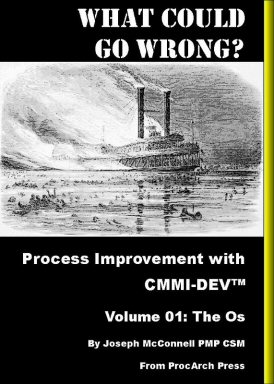
 |
ProcArch Services |
|
| What's New |
ProcArch Press | Contact Us |
| ProcArch Services provides
consulting and process definition services for technology
companies. CMMI©-DEV process definition
is a specialty. Now Available! The first in Joseph McConnell's CMMI-DEV series, What Could Go Wrong?" Published by ProcArch Press, the first of these eBooks presents the basics of process improvement with CMMI by looking at the risks of not doing it. Get it from Amazon in Kindle format here. |
 |
Find out more about CMMI from
Carnegie-Mellon University's Software Engineering Institute. |
Is CMMI compatible with Agile Methods? |
What do we mean, "Process Architecture?"
You wouldn't launch a large-scale software system without considering how it's put together, would you? How about a hardware effort? Or a full-blown system of systems? Anything with multiple interacting elements needs some level of design and coordination when it's being put together, right? Otherwise, how will it be maintained and enhanced? How will you find root causes when problems occur?| Copyright© 2014 ProcArch, LLC | Email contact@procarch.com |